Route 66, the iconic “Mother Road,” winds its way from Chicago, Illinois to Santa Monica, California. If you don’t have the time to drive the entire route, why not take on this icon of American transportation history in bite-sized pieces? We’re going to help you do just that with a series called Get Your Pics on Route 66 in hopes that you’ll capture some great memories and images as you explore this little slice of Americana. Here’s the Western New Mexico installment:
The western part of New Mexico has a wide variety of Route 66 reminders, varying landscapes and wonderful historic destinations. You’re going to love this section of the Mother Road!

Rio Puerco Bridge
We left off in Central New Mexico at Albuquerque, having seen all forms of neon signs, retro motels, and kitschy eateries. Today we’ll head west on I-40 out of the city, then get off at Exit #140. To your right is the 66 Pit Stop and across the highway is the Route 66 Casino and Travel Center…that must mean you’re in the right place!
Straight ahead lies an old relic of the highway—the Rio Puerco Bridge, built in 1937. Lying parallel to today’s interstate, this bridge is still considered one of the longest spans in New Mexico at 250 feet. The structure is closed to traffic, but the pavement still exists with weeds stressing its lack of use.
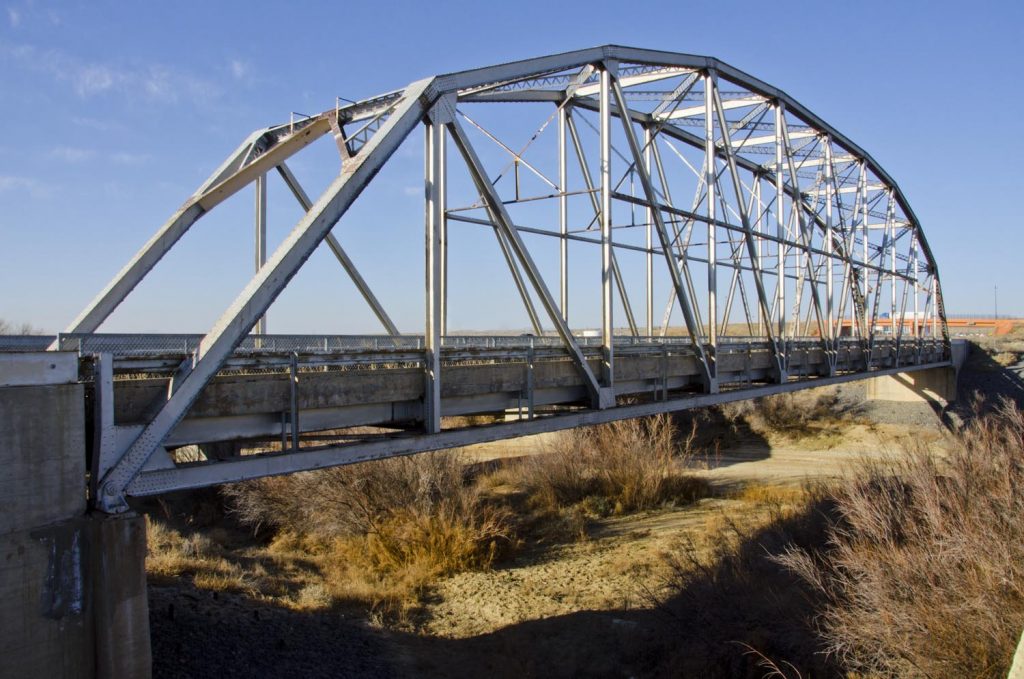
Route 66 Shield
Pick up I-40 west again until reaching Exit 117. It is here that the original route meanders away from fast-paced traffic, and there are several relics to see. Take the “Frontage Road” heading west on the north side of the interstate and you’ll be rewarded with a Route 66 shield painted on the pavement close to Owl Rock…it’s the perfect place for picture-taking (just watch out for traffic around the curve)!

Laguna Pueblo
Continue following the pavement west through Mesita and enjoy Old Laguna Pueblo, situated around the San Jose Mission, built in 1699. Please remember that the many pueblo communities throughout the southwestern United States sometimes require permits to photograph or travel within their boundaries. Each village has its own set of rules, but generally speaking, photography is not allowed without a permit. If photographing people, please ask permission first. A great rule of thumb is to always be respectful.
The roadway picks up outside the pueblo and meanders through red rock country and arid landscapes. Along the road’s edges are several crumbling rock buildings from the heydays of Route 66. As it curves north beyond Paraje, you’ll see a remarkably well-preserved service station on the left of the road with a sign announcing “Budville.” Opened two years after the creation of Route 66, this gas station/wrecker shop/bus ticket location was run continuously until an armed robbery in 1967 left the owner, Bud Rice, dead. His wife continued operating the store until 1979 when it finally became just another reminder of America’s most famous highway.
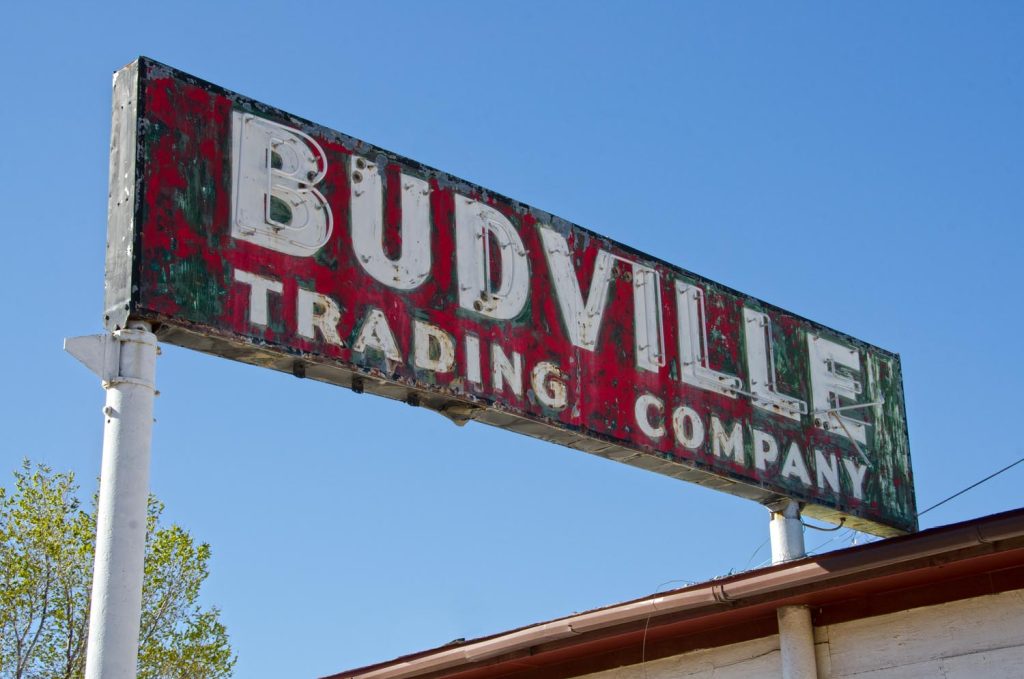
Driving west, eventually, the street almost collides with Interstate 40 again at Exit 96. There you will venture upon two Whiting Brothers gas station and motor inn signs and the remnants of said service station. The Whiting Brothers discovered back in 1926 that they could utilize wood from their father’s sawmill to build businesses along Route 66, catering to travelers. In fact, at one point they owned more than 100 motels, service stations, cafes, and souvenir shops. Today, however, there is only one Whiting Brothers station still in operation.
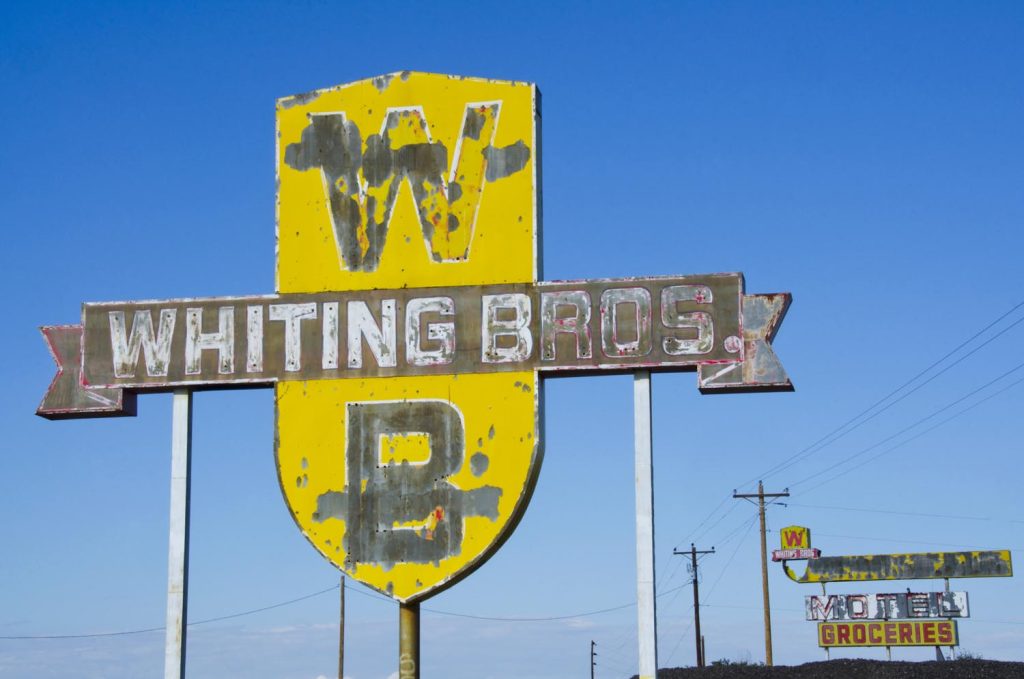
Follow the road under I-40 to get a view of Santa Maria Mission, then hope back on the interstate headed East for a great side trip to Acoma Pueblo!
Acoma Pueblo
Exit I-40 at the Dancing Eagle Casino (exit 108) and travel south on Highway 23 for 15 miles to the Sky City Cultural Center. The Acoma have built a very modern and well-equipped welcome center at the base of the mesa, complete with a museum, reception center, and gift shop. I was even told that dog kennels were available, although I didn’t make use of them that day.
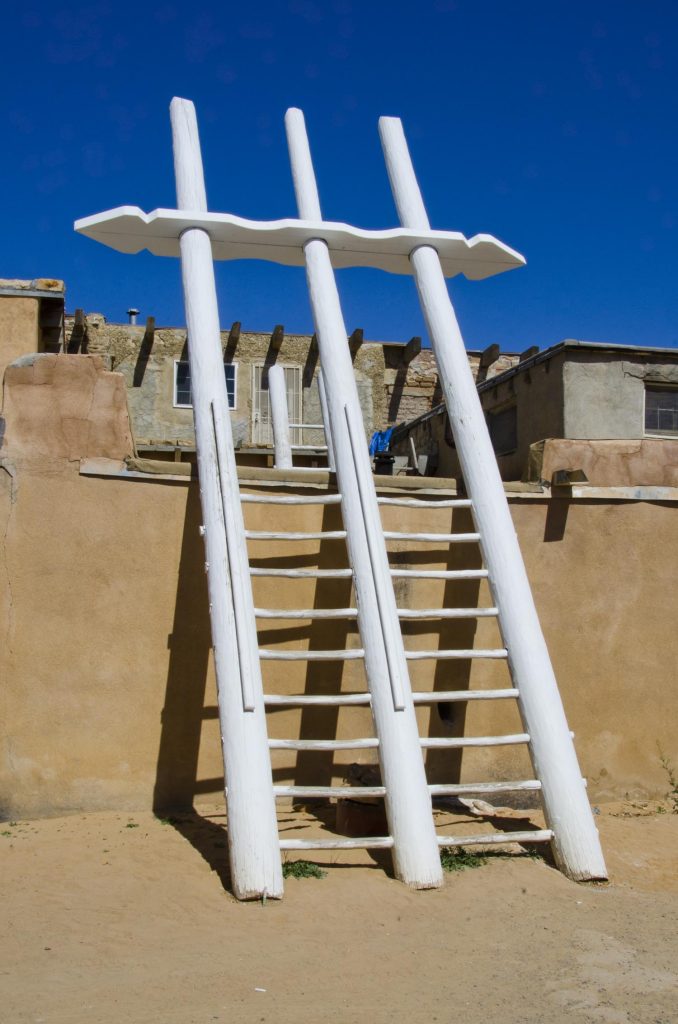
Purchase a guided tour ticket, and if you’re a shutterbug, by all means, get a photography permit—it will be well worth it! Your tour will include a shuttle ride to the top of the mesa and a walking tour of the village with a very personable guide. You’ll get great insight into the history of the Acoma people and have the opportunity to not only view but purchase stunning Acoma pottery and artwork from the artists themselves as they stand outside their ancestral homes. Just be sure to remember that you’ll be walking in the desert sun for a couple of hours, so bring a hat, sunscreen, and some water! For a more in-depth look at Acoma, visit City in the Sky.
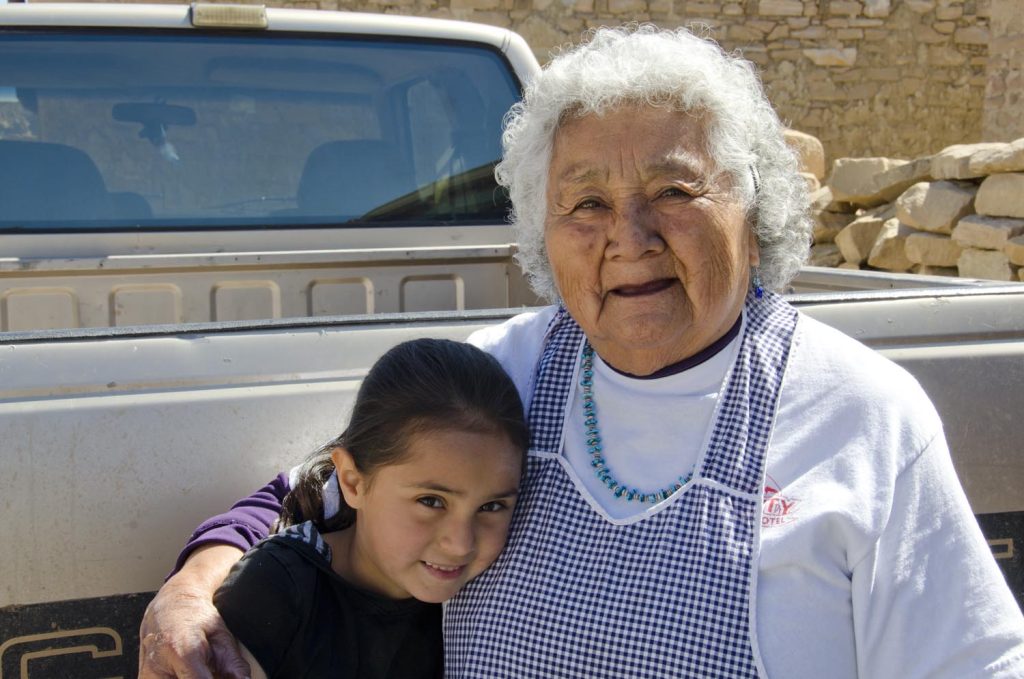
Grants
Once you’ve indulged in fascinating art, astonishing history and met the wonderful residents of Acoma, head back to I-40 and travel west again, coming to the town of Grants, New Mexico. Founded as a railroad camp in the 1880’s by three Canadian brothers named Grant, the town prospered with logging in the nearby Zuni Mountains, then more recently as the “Carrot Capitol” and as an important leg of Route 66.

Today, many tokens from the Mother Road’s past are sprinkled throughout the town. Movie theater signs harken back to the 1950’s, along with neon from local motels and cafes. The transportation industry is well represented, if only in passing with transmission and radiator shops from the highway’s most popular time period.
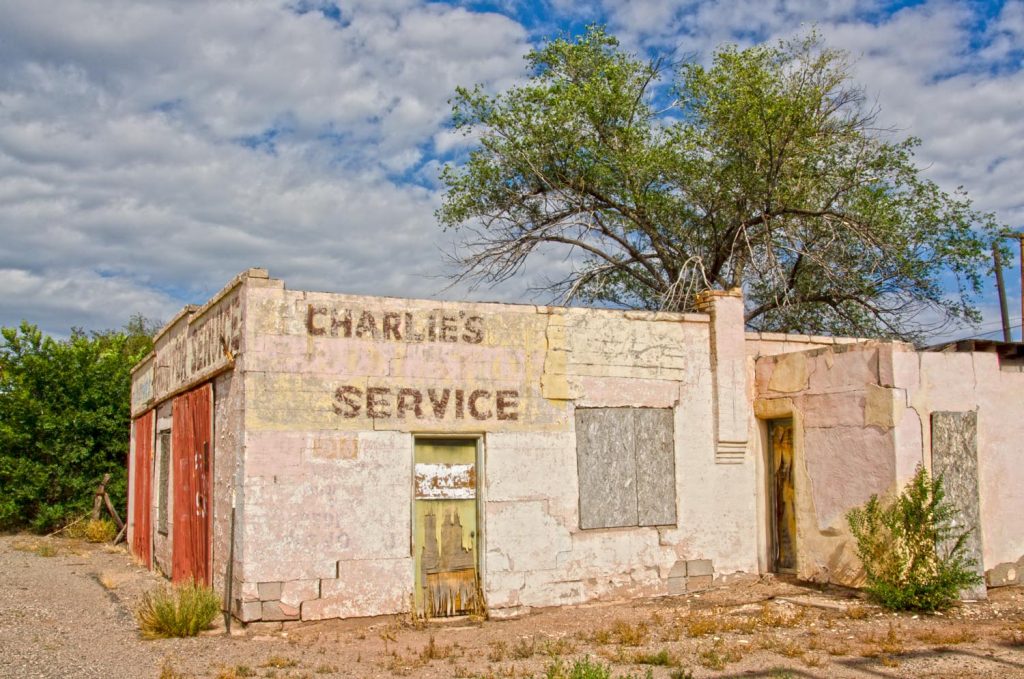
Visitors might enjoy a little side trip from Grants to El Malpais National Monument, located 28 miles south. Filled with volcanic cones, lava tubes and ice caves, it’s full of dramatic landscapes and geologic wonders.
There’s one more imperative stop along Route 66 in western New Mexico…let’s head for the border!
Gallup
Gallup, New Mexico sits in the far western sector of the state and is filled with remnants from The Route that are by and far still embraced today. Several neon signs, both old and new, pay homage to the town’s prosperity from Route 66 travelers. And as the highway was gaining in popularity, Hollywood also came calling.

The surrounding landscapes of the area lent themselves well to movie westerns. Cowboy actors like Ronald Reagan and John Wayne came to town and they needed a swanky place to stay while filming, so the Hotel El Rancho was built by R.E. Griffiths, brother of famed movie director D.W. Griffiths. The lodge housed the likes of Katharine Hepburn and Spencer Tracy, Errol Flynn, Humphrey Bogart, and Kirk Douglas within its walls, and today many of the rooms are named for their famous guests.
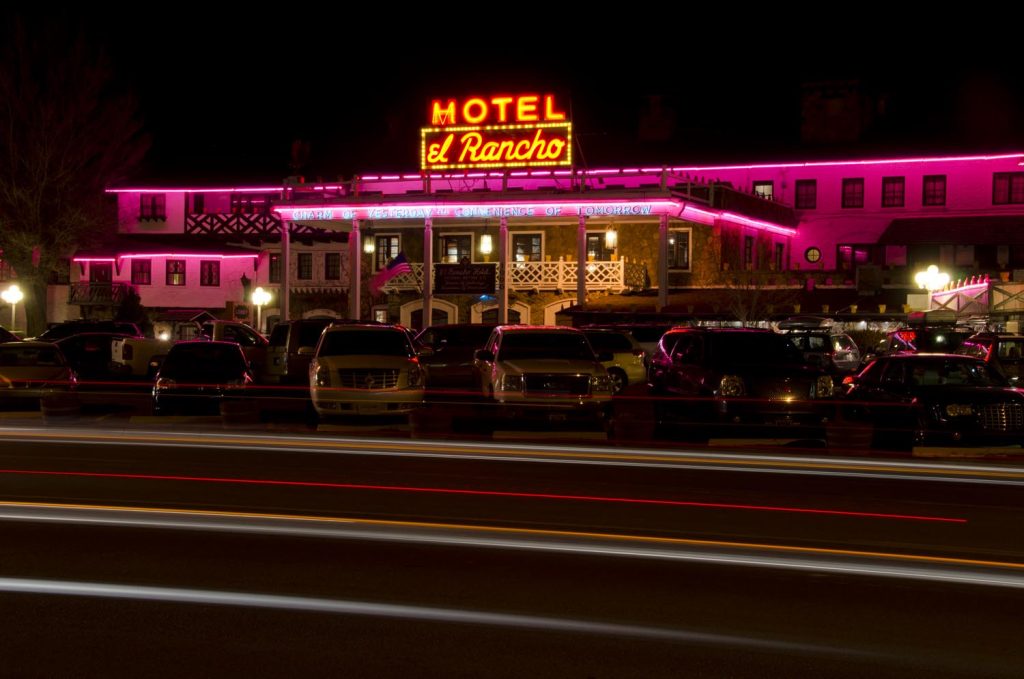
Definitely stop in and enjoy the huge rustic lobby with its period artifacts, movie start headshots, and hospitality. You might just see a cowboy or two!
Gallup is very well known today for its concentration of Native American jewelry artists. Every year, jewelry store buyers come to town hoping to take home authentic sterling silver and turquoise squash blossom necklaces, inlaid rings and bracelets, and intricately designed earrings—all so they can sell them from shops around the country.
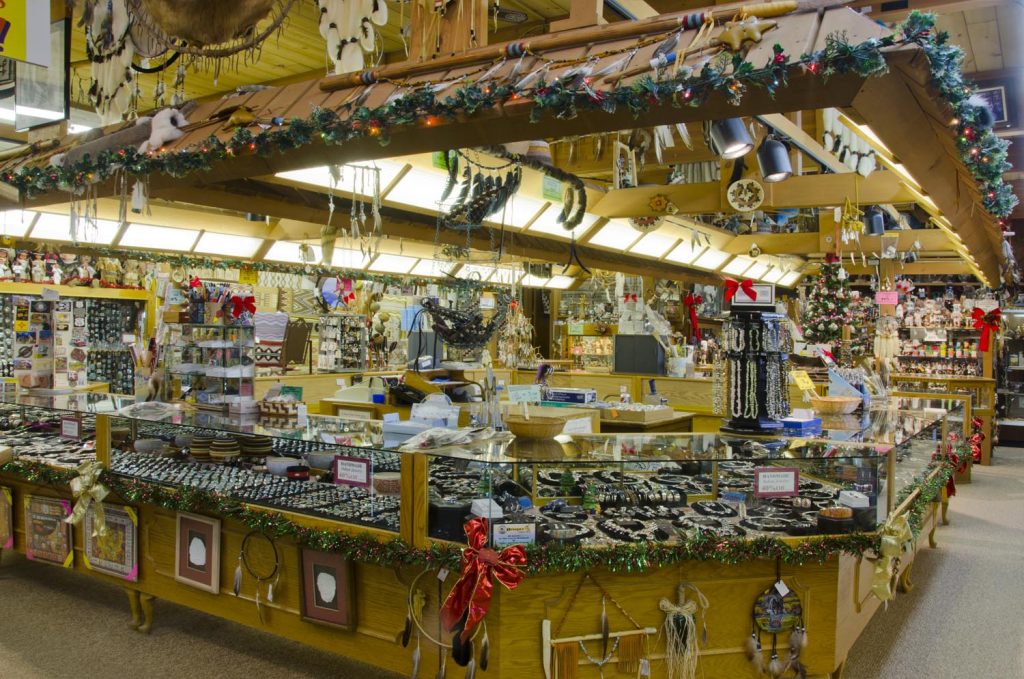
Gallup has become the central marketplace, bringing artists and buyers together. And you don’t have to be a store buyer or representative to enjoy the wide selection of wonderful artwork…and you’ll probably get a better deal than purchasing from your jeweler. Visit any number of stores along old Route 66 to find your own treasure!
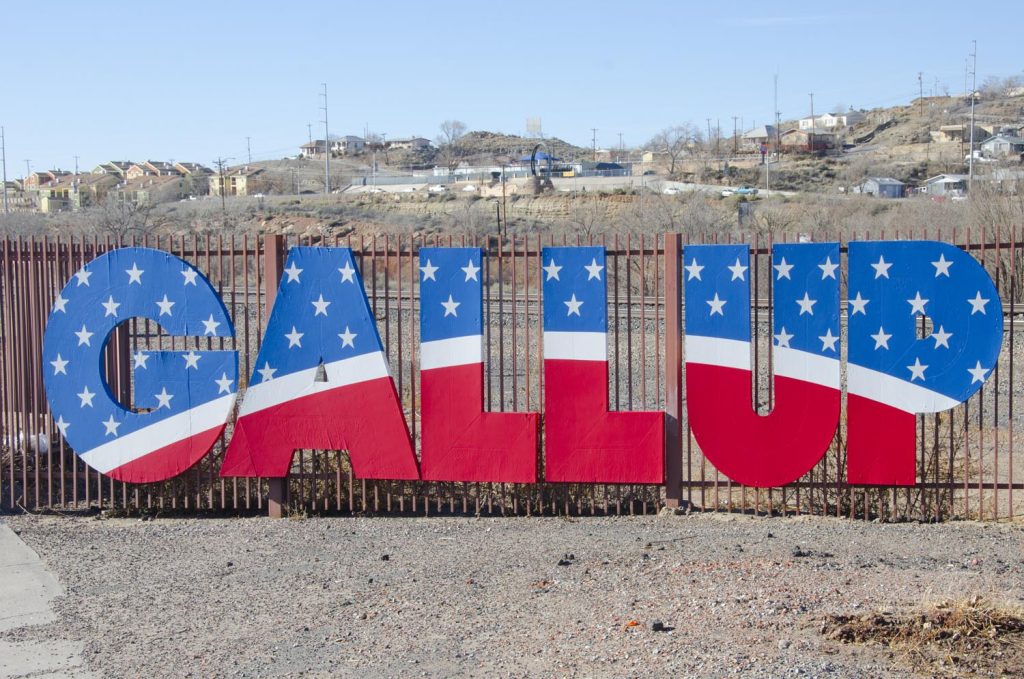
It’s easy to see how this eclectic town surrounded by rocks and desert has kept itself alive, constantly remaking its image with new ventures while mixing history with opportunity. Even today it’s not hard to imagine a red 1950 convertible cruising down Route 66 here, looking for adventure along the road! Why not find your own adventure in a motorhome or travel trailer from Camping World?
You can drive the rest of Route 66 with our other “Get Your Pics on Route 66” articles. Read the entire series.









Thank you, Marjorie! I hope you get a chance to explore the downtowns of some of these places for Main Street Destinations! They are wonderful!
Stunning photos, Shellie! I love your stories and great information.